GameSpot Presents: Dreamcast's 10th Anniversary: The Rise and Fall of Sega's Last Great System
Take a trip back in time as we look at the highs and lows of Sega's last console.
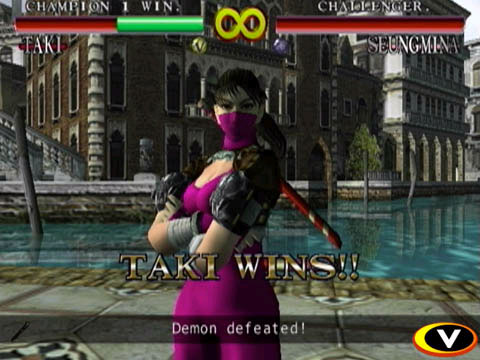
Sega's last attempt at a successful console platform was a valiant one. For many, the Dreamcast--which launched September 9, 1999--righted many of the things that Sega's previous console, the Saturn, did wrong. In fact, in many ways, the Dreamcast was the antithesis of the Sega Saturn. Instead of being a complex, multi-CPU system, the Dreamcast had a single, zippy CPU, a built-in 56K modem, and a powerful graphics processor that could produce some dazzling effects and detailed visuals in both 2D and 3D--whereas the Saturn mainly excelled in the 2D department. Therefore, it was clear from the start that the entire machine was designed to make development as easy as possible, as further evidenced by the inclusion of Windows CE as a development platform.
Equally important for Sega was retailer support. Many stores felt burned by the knee-jerk-reaction launch of the Sega Saturn (to get the system out before the PlayStation), which gave them little time to adequately prepare for its arrival. Of course, the early launch also didn't do the Saturn or retailers any favors in terms of the system's launch lineup, because only a few games were available. But the Dreamcast was a different story. Sega spent almost an entire year ensuring that retailers had adequate time to prepare for and promote the Dreamcast, which led to some impressive preorder numbers. Additionally, the Dreamcast launch lineup was diverse, ranging from arcade and sports games like Hydro Thunder and NFL 2K, to fighting games like SoulCalibur, Power Stone, and Mortal Kombat Gold. Truly, there was something for everyone, including all of the Sonic the Hedgehog fans who finally got a proper 3D follow-up to the popular series with the original Sonic Adventure.
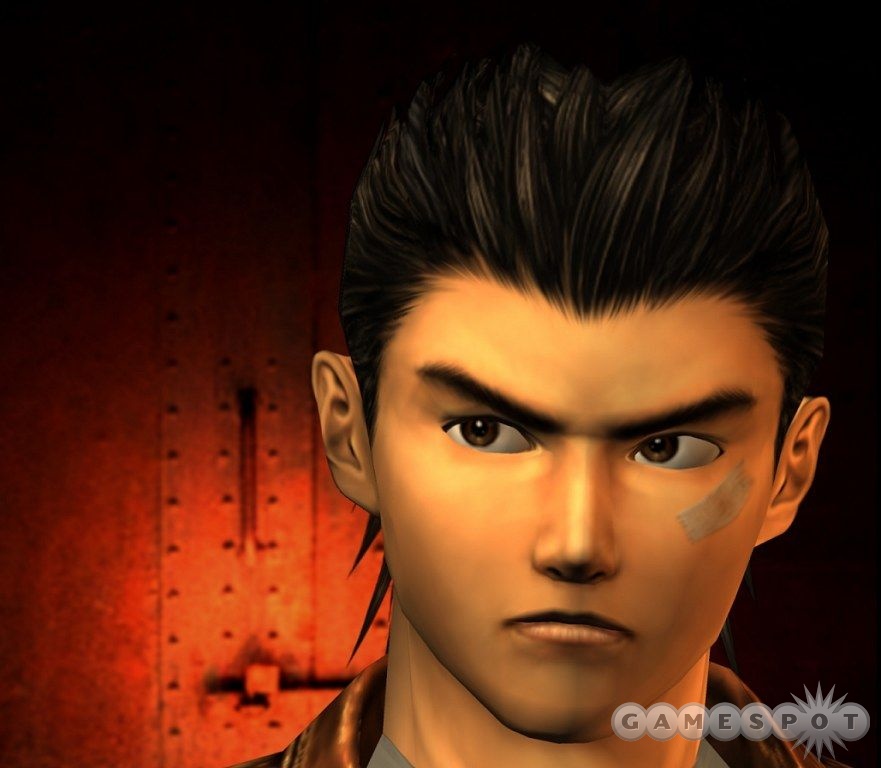
Ultimately, the Dreamcast ended up being a remarkably well-rounded console that tried to bridge the gap between the classic 2D graphics of older consoles and the 3D graphics of modern games, and it arguably succeeded. Some Dreamcast fans remember the console as the last great bastion of 2D fighting games such as Street Fighter III, Street Fighter Alpha, The King of Fighters, and the Marvel vs. Capcom games. Others remember it as the sports fan's console--the birthplace of what would become the outstanding 2K Sports series, particularly the early installments of the NBA 2K and NFL 2K series, the latter of which was killed off after the NFL signed a licensing exclusivity agreement with EA Sports in 2004. Other fans remember it as a great racing-game console, home to both excellent simulations and arcade racers, including Test Drive Le Mans, F355 Challenge, Sega Rally Championship 2, and, of course, Crazy Taxi. Then there are fans who recall the Dreamcast as a very quirky, "very Japanese" console with a varied game library that included such oddities as Seaman, ChuChu Rocket!, and the love-it-or-hate-it adventure odyssey Shenmue--it was definitely a great choice for fans of quirky imported Japanese hardware and software, given its unusual Virtual Memory Unit (VMU) memory card and cross-functionality with SNK's NeoGeo Pocket handheld. And still others look back on it for being the first modern console to explore online multiplayer gaming with such experiments as Quake III Arena and Phantasy Star Online--trailblazing hardware that arguably set the stage for Xbox Live and PlayStation Network.
And now, we look back on the console and its tumultuous history--its many triumphs and its frustrating shortcomings. Browse the timeline of the Dreamcast, and then get our editors' take on the hardware and their experiences yelling at Seaman, exploring online in Phantasy Star Online, and looking for where Chinese sailors hang out in Shenmue.
The Life and Death of the Dreamcast
Take a look at the highs and lows as originally reported by GameSpot as they happened.
May 1, 1997: Peep Show: Sega's New Console Creeps Out of the Shadows
Before the official Dreamcast announcement, the first real details of Sega's follow-up to the Saturn surrounded a project named Black Belt, which was designed to use a 3dfx-powered graphics chip.
February 3, 1998: Could It Be Katana?
A new code name surfaced for Sega's next system, indicating that the Black Belt project had been dropped in favor of something different.
April 22, 1998: Katana Strategy Still on Back Burner
Newly appointed Sega of America president Bernie Stolar confirms Katana and goes into detail on how Sega can win back its market share with a new system.
May 19, 1998: Katana to Become Dream Cast?
Reporters spot the first official mention of Sega's new system days before the Electronic Entertainment Expo.
May 21, 1998: Dreamcast Is Here…Almost
The Dreamcast is officially announced in Japan. Sega reveals that the system will use Power-VR hardware and will come packed in with a 33.6K modem in that country.
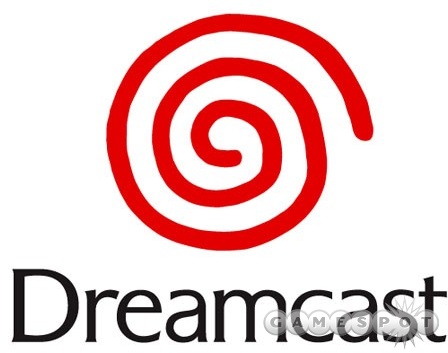
May 21, 1998: Sega of America "Goes Big"
Shortly following Sega of Japan's reveal, Sega of America officially announces the Dreamcast for North America.
May 22, 1998: Dreaming of Dreamcast
GameSpot readers of 1998 share their thoughts about everything from the logo and the name of the system to its technical specs.
June 1, 1998: Sega Unveils Dreamcast to US
The first footage of Dreamcast projects is shown to press in the US, including an early glimpse at an impressive shooter named Geist Force.
July 13, 1998: Sega's First Dreamcast Title Revealed
While most were expecting Virtua Fighter 3 to be the first official Dreamcast game, Sega surprises everyone with Godzilla Generations, which is also one of the first games to use the system's VMU.
July 15, 1998: Stolar Talks Dreamcast
GameSpot's interview with then Sega of America president Bernie Stolar goes in-depth about Sega's strategy with the Dreamcast and how the company plans to get support from developers.
July 16, 1998: Sonic Onboard Dreamcast
After years without a proper Sonic game, Sega finally announces Sonic Adventure for the Dreamcast with a tease of Sonic's eyeballs and the promise of a big event.
September 17, 1998: How Naomi Got Its Groove On
Sega reveals the arcade incarnation of the Dreamcast hardware, which makes arcade games cheaper for operators and Naomi-to-Dreamcast ports much easier.
October 8, 1998: BioHazard and More on Dreamcast
Capcom releases the first screenshots from two very important Dreamcast games: Resident Evil Code: Veronica and Power Stone.
November 2, 1998: Trouble in Castlevania?
The rumored Dreamcast Castlevania game already hits some serious barriers, and insiders dub it "Cancelvania."
November 13, 1998: PlayStation 2 to Reach 128 bits?
Even the earliest rumors of the PlayStation 2 hardware draw dark clouds over the impending Dreamcast launch in Japan.
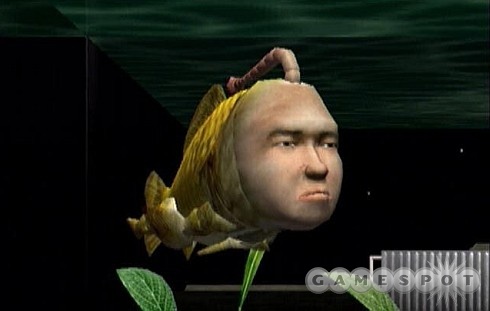
November 20, 1998: Project Berkley Becomes Reality
Yu Suzuki gives an early glimpse of what eventually becomes one of the most divisive Dreamcast games, Shenmue.
November 25, 1998: Vivarium Does DC Voice Recognition
Yoot Saito and his team unveil Seaman for the Dreamcast, a game that lets you talk to a man-frog-thing via a microphone that attaches to the controller. The North American release would feature the voice talents of Leonard Nemoy.
November 30, 1998: Sega's Big Opening
The Dreamcast launches in Japan and sells out at retail much to Sega's delight.
February 1, 1999: Dreamcastville: Population 4 Million
Some early chest-thumping by Sega shows that the company expects to sell plenty of units by March 2000.
February 24, 1999: Sega's DC Football Game
Visual Concepts reveals its first Dreamcast football game, which would later jump-start the 2K series of sports games.
What were your memories of the Sega Dreamcast hardware and game lineup? Leave us a comment and share your thoughts.
The Life and Death of the Dreamcast (continued)
March 2, 1999: Sony's Dream, Sega's Nightmare
GameSpot examines how the impressive unveiling of the PlayStation 2 will affect Sega's new system.
March 3, 1999: Dreamcast Team Addition
Sega adds former Reebok executive Peter Moore to its team. Perhaps you've heard of him?
March 4, 1999: Kojima's Next Game on DC?
With the popularity of Metal Gear Solid, fans eagerly await Kojima's next project. Rumors suggest that he's working on a recently announced Dreamcast game called Raizeleet.
March 5, 1999: Sega Makes Its Statement
Sega finally responds to the PlayStation 2 announcement. Then Sega of America president Bernie Stolar says, "On paper, Sony's machine sounds impressive. But the fact is, it's still on paper."
March 17, 1999: Sega Outlines US Launch
A few more details come out about the US launch, including the availability of a 56K modem and a possible DVD-equipped version of the Dreamcast.

April 15, 1999: Dreamcast $199 on September 9
Finally, the official details about pricing and the date for the US launch are revealed. Sega also says that the North American version of the Dreamcast will come with a 56K modem and not the original 33.6K modem found in the Japanese version.
April 20, 1999: Namco Talks SoulCalibur
Namco reveals some extra details about the enhanced version of SoulCalibur for the Dreamcast, which becomes one of the system's most popular games.
July 12, 1999: Price Drop Fuels Sales
Perhaps serving as a sign of things to come, Sega of Japan drops the Dreamcast price down to 19,900 yen to stimulate slowing sales.
July 30, 1999: Bleem's President Vents
Bleem, the software that lets you play PlayStation games on the PC, comes under fire, but the company still considers releasing a Dreamcast version, which would later come to fruition as Bleemcast.
August 3, 1999: Sega Dreamcast Network Details
GameSpot gets some early details on the network infrastructure for the Dreamcast, including that the network will not be ready for full-on multiplayer gaming until the following year.
August 12, 1999: A Post-Bernie Sega Speaks
A month before the Dreamcast release, Sega ousts then-president Bernie Stolar. The remaining executive crew, which includes Peter Moore, comments on where Sega will go next.
August 13, 1999: EA Comments on Dreamcast
The drama surrounding EA's support for the Dreamcast continues as the company says it's still "evaluating" the platform.
September 10, 1999: Sega's $97 Million Dreamcast
The Dreamcast gets off to a successful start as Sega measures launch-day revenue and praises a successful preorder campaign with 300,000 units reserved at retail.
September 10, 1999: Defective Dreamcast GD-ROMs
The launch doesn't go as flawlessly as Sega hopes. Reports surface about games not playing properly on systems due to data being improperly burned. Sega quickly offers a replacement program.
September 14, 1999: DC Sells Through the Roof
More impressive launch numbers show that Sega sold 372,000 Dreamcasts in its first four days.
November 5, 1999: Sega Comments on 2000
GameSpot speaks with Sega of America's Charles Bellfield to get details on the company's Dreamcast plans for network gaming, the Windows CE-powered portion of the platform, and the Dreamcast Zip drive. The number of Dreamcasts sold reaches 750,000.
December 21, 1999: BioHazard: Code Veronica Arrives
Capcom releases the demo for Resident Evil Code: Veronica in Japan, cementing its status as one of the Dreamcast's flagship games.

January 5, 2000: First Look: Tony Hawk Dreamcast
One of many major third-party PlayStation games makes its way to the Dreamcast and leads the way for others that are announced a few weeks later, including Tomb Raider.
January 7, 2000: EA Square Considers Dreamcast
Rumors swirl that the newly formed publishing venture between Electronic Arts and SquareSoft will produce additional support for the Dreamcast from both companies.
February 14, 2000: DC Internet Users Reach 1 Million
The worldwide number of Dreamcast users online reaches the 1 million mark--an important figure that shows how many owners are ready for the upcoming push for online multiplayer gaming.
March 29, 2000: Quake III Arena for Dreamcast Announced
Activision and id formally announced a Dreamcast version of the popular PC first-person shooter. Quake III Arena also becomes one of a few games to support the Dreamcast keyboard and mouse as well as the broadband adapter.
March 31, 2000: Jet Set Radio Lights Up Sega Booth
The springtime version of the Tokyo Game Show features some of Sega's most prominent Dreamcast games, one of which is the visually impressive Jet Grind Radio, while the other is…
March 31, 2000: Phantasy Star Online Unveiled
Phantasy Star Online, an online multiplayer role-playing game, is a big hit at the Tokyo Game Show, and it shows that Sega is taking online gaming seriously.
June 15, 2000: EA's PlayStation 2 Support
EA all but officially steps away from any potential Dreamcast support, pushing all of its efforts toward the PlayStation 2. Sega of America president Peter Moore says, "They would never admit it, but I'm sure they regret the decision now that the numbers are out."
August 17, 2000: Dreamcast Misses Projections
Despite doing well in North America, worldwide sales for the Dreamcast fall short of expectations. The system has an especially hard time selling in Japan.
August 31, 2000: Dreamcast for $149.95
Sega drops the official price of the Dreamcast and bundles it with an online deal to help spur sales and support for upcoming online games, including NFL 2K1, NBA 2K1, Quake III Arena, and Phantasy Star Online.
September 7, 2000: SegaNet Launches
Almost a year after the Dreamcast hits shelves, Sega launches its full-scale online gaming network with NFL 2K1.
October 3, 2000: Dreamcast Sales Stimulated
Sega gets a boost in Dreamcast sales thanks to the price reduction, the release of NFL 2K11, and the recently launched SegaNet.
October 31, 2000: Low Pings Invade SegaNet
The Dreamcast broadband adapter arrives at GameSpot much to the dismay of users stuck with the standard 56K modem.

November 7, 2000: Sega Ships Shenmue
After years of work and millions of dollars, Sega finally releases Yu Suzuki's eagerly anticipated adventure game, Shenmue, in North America.
January 23, 2001: Report Claims That Sega Plans to Halt Dreamcast Production
Things aren't looking up after the holiday shopping season. Sega of Japan hints at the possibility that the company will abandon its position as a console manufacturer. The next day Sega confirms that it's exploring other opportunities with the Dreamcast hardware.
January 31, 2001: Sega Announces Drastic Restructuring
The unthinkable happens: Sega formally withdraws from the hardware console race and becomes a third-party developer, announcing various PlayStation 2 projects. The company also announces a Dreamcast price drop to $99.95 but vows to continue supporting the Dreamcast with software.
January 31, 2001: Peter Moore Discusses Sega's Announcement
Sega of America president and CEO Peter Moore discusses Sega's new role as a third-party developer.
November 21, 2001: Sega Drops Dreamcast Price Again
In what is surely an Old Yeller moment, Sega makes its last official cut in price for the Dreamcast, dropping it from $79.95 to $49.95--the price of a single game on other platforms.
August 28, 2003: Phantasy Star Offline
Sega announces plans to close the online servers for Phantasy Star Online, thus officially taking the Dreamcast off life support for the remaining users of its online service.
What were your memories of the Sega Dreamcast hardware and game lineup? Leave us a comment and share your thoughts.
The Dreamcast Remembered
GameSpot editors recall some of their fondest memories of the Dreamcast--the hardware, the games, the ups, and the downs--and how it managed to become permanently etched in their gaming histories.
Andrew Park Managing Editor
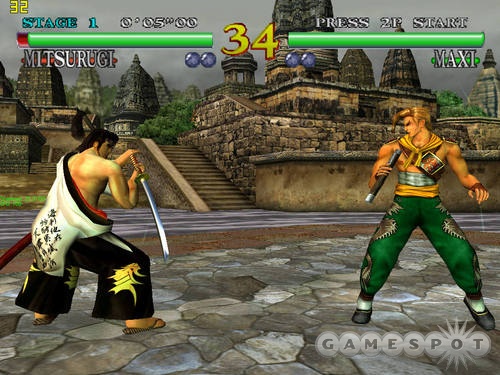
As someone who focused on PC games, and whose previous time with console and arcade games was generally spent on one-on-one fighting games, I didn't have a high opinion of console hardware in the late 1990s. I wasn't a big fan of playing PlayStation fighting games where I'd win the first round, sit through a nine-minute loading screen, then win the second round, then sit through a five-minute loading screen to see my character's victory pose, and then wait another nine minutes waiting for the next match to load up. Back then, I stuck to arcade games and cartridge-based hardware, like my NeoGeo AES home cartridge system, which was arcade-perfect with no load times. Then I saw SoulCalibur for the Dreamcast and was stunned. Even though I was only a casual fan of polygonal fighting games like Tekken, Soul Edge, and Virtua Fighter, SoulCalibur's amazing graphics (and its beautiful soundtrack and excellent voice acting) were a revelation to me. As a result of that game's tremendous presentation, as well as its solid fighting engine and many game modes, I became a believer in console fighting games and, I suppose, in modern console games in general.
Brian Ekberg Senior Editor

Ten years and four months ago, I was prowling the halls of the 1999 Electronic Entertainment Expo in Los Angeles, checking out all the Dreamcast games on hand and unable to tear my unbelieving eyes away from kiosks housing NFL 2K. Ten years and two months ago, I was sitting on my couch poring over gaming magazines in the hopes of gleaning any new scintilla of information I could about the Dreamcast. Ten years and two weeks ago, I was searching through my bank account, my wallet, and my sofa, scrounging for every bit of spare change I could muster toward my purchase of a console. Ten years and one week ago, I was arguing with my then-roommate about which launch games he would buy (Ready 2 Rumble Boxing) versus which ones I would foot the bill for (NFL 2K, SoulCalibur, and, soon after launch, NBA 2K). Ten years and a handful of hours ago, I was in line at my local game retailer looking to pick up my launch console.
Ten years ago today, I was ensconced in my living room and murdering my roomie in NFL 2K.
I have more fond memories of the Dreamcast than any other console in my long gaming history. There's an element of rose-colored nostalgia there, but the Dreamcast's short history was populated by so many personal favorites, including Legacy of Kain: Soul Reaver and Grandia II.
Where the Dreamcast shone brightest for me was with its sports games. I would argue that the Dreamcast did more for sports gaming than nearly any console before or since, with all-time classics like NFL 2K and NBA 2K, as well as fantastic racing games like F355 Challenge and the underrated Sega GT series. Cutting-edge presentation and graphics and innovative online features made a lot of sports fans out of Dreamcast owners…and made Sega's competitors take notice.
The irony, of course, is that the Dreamcast made such huge strides in sports gaming despite (or perhaps more accurately, in spite of) a complete lack of console support from Electronic Arts (and its subsidiary EA Sports). Even more ironic: That lack of support contributed to the Dreamcast's downfall and led us to the exclusive-license-happy sports gaming landscape we grouchily inhabit today.
Ten years ago. It was good while it lasted.
Tom McShea Associate Editor
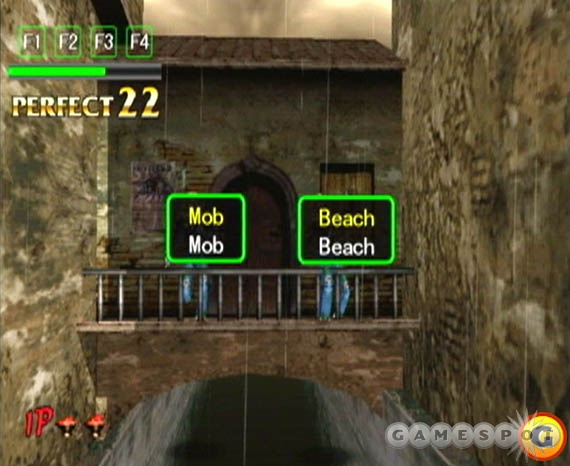
Killing zombies with a gun, your fist, or even a flaming chainsaw can be so cliche, but when you can turn your vengeance upon the always-feasting undead with a mere keyboard strapped to your back, full-scale genocide becomes so much more exciting. The Typing of the Dead is the ultimate learning tool, teaching people not only how to deftly locate the letters and odd symbols littering their keyboard, but also the quickest, most deadly way possible to vanquish an army of hungry brain lusters. The Dreamcast was known for its abundance of high-caliber arcade ports, but none of these transformed quarter munchers received the utterly bizarre, but strangely engrossing, face-lift that The House of the Dead 2 was privy to. The original light-gun shooter was full of unintentional comedy, with over-the-top voice acting so awful you couldn't help but smile, but by swapping your firearms for a standard computer accessory, the already comical veneer was made even funnier. Typing of the Dead may not deserve a spot among the oodles of awesome games the Dreamcast was home to, but it was so unique and laughably awesome that I'll always remember gunning down the living impaired by quickly typing "Even a guy like me nearly cried."
Brendan Sinclair News Editor
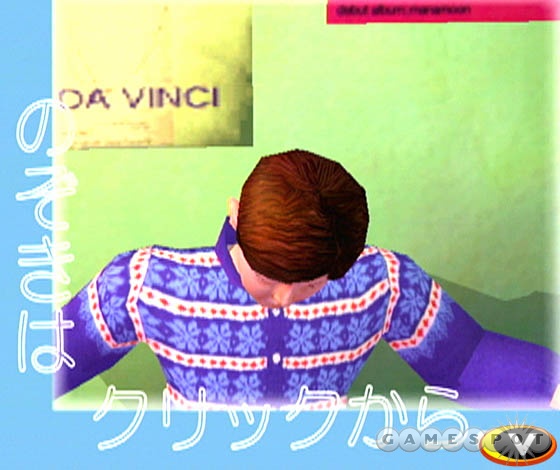
I have too many good memories of the Dreamcast to effectively boil them down into a paragraph-long eulogy. But a few moments stand out from the crowd. I remember winding down my college days with seemingly endless evenings spent passing controllers around for four-player matches of Tony Hawk's Pro Skater 2 or San Francisco Rush 2049's stunt mode. I remember my roommate and I having nightly random eight-on-eight Team Battle skirmishes in SoulCalibur and discovering new wrinkles to the game every time. I remember an embarrassment of riches from Capcom: Mars Matrix, Tech Romancer, Project Justice, Jojo's Bizarre Adventure, Street Fighter III: 3rd Strike, and Marvel vs. Capcom 2. Then there were the blessedly weird games, refreshingly novel experiences like Seaman, The Typing of the Dead, Bangai-O, or the Japanese poltergeist "sim" Roommania #203. I remember modding my Dreamcast in order to play Roommania and Giant Gram: All Japan ProWrestling 2 and having the system burn out on me within a month. I remember not thinking twice about rent or food money before running back out and dropping $200 on a brand-new Dreamcast. But mostly, I remember the joy of the best year and a half of my gaming life and the frustration of watching the system effectively die before its competition ever hit shelves.
Shaun McInnis Associate Editor
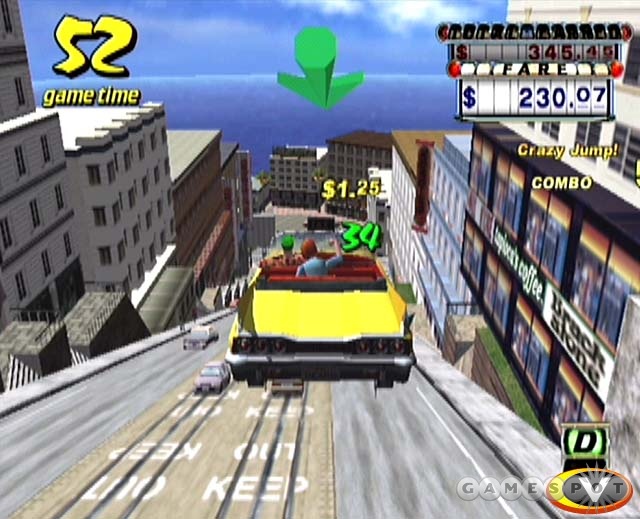
I'll get this out of the way right now: Prior to the Dreamcast, I had never owned a Sega console. I was a dyed-in-the-wool Nintendo fan right up to a point in the late '90s when I did the unthinkable and bought myself a Sony PlayStation, but never once did my childhood or teenage self consider buying a Sega console. When the Dreamcast was originally announced, I was perfectly content to meet its launch with the same ambivalence I had displayed toward the Genesis and Saturn.
Then something changed. With each issue of Electronic Gaming Monthly that showed up in my mailbox, some new Dreamcast game was written about that caused me to raise an eyebrow. Jet Grind Radio. Crazy Taxi. Sonic Adventure. (Wait, Sonic Adventure? That Sonic?) The allure of the Dreamcast's amazing graphics and promise of vast, shimmering 3D worlds was too much for me to resist. The wall was beaten down. After a few not-very-subtle hints directed toward my parents, I became the owner of a Dreamcast when Christmas morning 1999 rolled around.
We had some great times, that little machine and I. Few gaming memories I possess are as fond as my memories of tearing up Tokyo in Jet Grind Radio, flying ships in Skies of Arcadia, or, yes, even driving a forklift in Shenmue. (Who am I kidding? Especially driving a forklift in Shenmue.) But of course, that steady supply of great games wouldn't last. Who knows why? I prefer to think of the Dreamcast as a star that burned too brightly and couldn't last forever. In truth, it was something more akin to unfortunate business decisions and the looming threat of the PlayStation 2, but that reality doesn't soil or destroy my fond memories. Those don't die as easily as doomed hardware.
Giancarlo Varanini Editor-At-Large
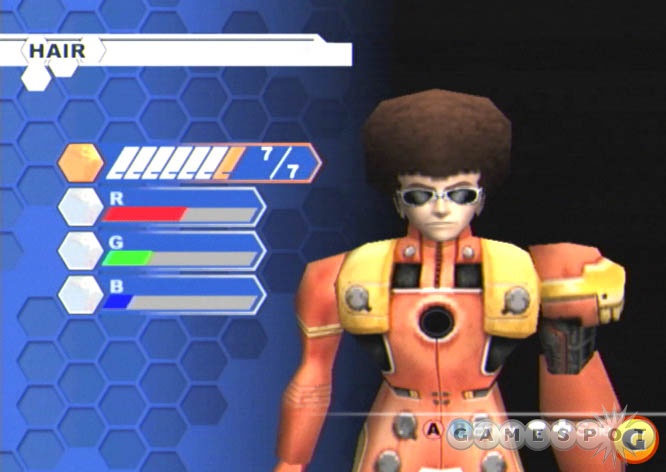
The Dreamcast will always have a special place in my mind since it's in part responsible for giving me the career that I have now. But that aside, I still remember the day I walked into an EB Games and saw a Sonic Adventure video running behind the desk. It was a scene from the first level where the camera switches in front of Sonic as a massive killer whale busts through the docks behind him. I just stood there--staring for what was probably 15 minutes as the same sequence repeated over and over. Despite having seeing countless screenshots and videos of Dreamcast games, it was (at the time) one of the most amazing things I'd seen in a console game. Others soon gathered around to see what my friend and I were looking at and subsequently went up to the EB Games employee to plunk down some cash for a preorder.
It would be the first of many such moments I enjoyed over the Dreamcast's life. Whether it was the amazing SoulCalibur and the near-perfect arcade port of Crazy Taxi or some of the best sports games such as the NFL 2K and NBA 2K series of games, there was a constant stream of great games that not only provided countless hours of entertainment, but also gave a glimpse of where gaming was headed. Think of it this way: what other system prior to the Dreamcast let you talk to a creature that had the body of a fish and the face of a very cynical Japanese man?
But there was one game that had me more impressed than almost all the other Dreamcast games, and that was Phantasy Star Online. At the time, I wasn't sure why I was so completely fascinated with it. After all, I'd already been doing significant amounts of online gaming with first-person shooters like Quake and role-playing games like Diablo and even EverQuest. And for the most part, Phantasy Star Online felt more like a 3D sci-fi Diablo than anything fundamentally unique. Perhaps it was just the experience of playing it on a console and not a PC and the fact that it worked so darn well? I'm still not sure but I was hooked, and I will never forget the time that a group of former GameSpot editors and I were engaged in a late-night marathon session when one of them says through the in-game chat, "I think someone just got murdered outside my apartment." We probably should have called him to make sure he was OK, but we just kept on playing, and it was then that I realized that online multiplayer gaming for consoles had truly arrived.
What were your memories of the Sega Dreamcast hardware and game lineup? Leave us a comment and share your thoughts.
Got a news tip or want to contact us directly? Email news@gamespot.com






Join the conversation